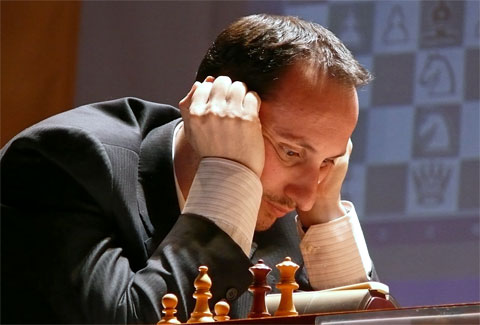Kamsky vs. Topalov (Sofia, Bulgaria)

Gata Kamsky will take on the world’s highest-rated player in Veselin Topalov is an eight-game match to determine who will challenge Viswanathan Anand in the World Championship match. After a long tortuous battle of negotiations, the venue will be Sofia, Bulgaria and will begin play on February 18th and end February 28th.

GM Veselin Topalov
Photo by Dagobert Kohlmeyer.
This location of the match had been in doubt until a compromise was reached with the Kamsky camp. The match will prove to be an exciting one with Kamsky attempting to regain his elite status of 15 years ago. Topalov has been playing well of late and will put his #1 status on the line. This match will pit two players with indomitable spirits and tough fighters.
The key may be Kamsky ability to hold his openings together after coming out of retirement. The Topalov team is legendary for impeccable preparation and Ivan Cheparinov will be working his magic. Kamsky may have the edge in terms of nerves.
Topalov has a tendancy for early lapses only to rebound and put together a string of wins. This will be improbable for two reasons. First, this is not a long tournament, but a match of only eight games. Second, Kamsky titanium nerves have rarely failed him and he is unlikely to fold.
This $250,000 match is highly-anticipated and will help move toward the end of a cycle in the new championship system. The winner will play Anand later in the year.
Match Score
Game 1: Topalov – Kamsky, ½-½ (36) Gruenfeld
Game 2: Kamsky – Topalov, 0-1 (32) Ruy Lopez
Game 3: Topalov – Kamsky, ½-½ (37) Gruenfeld
Game 4: Kamsky – Topalov, 1-0 (73) Ruy Lopez
Game 5: Topalov – Kamsky, 1-0 (55), French
Game 6: Kamsky – Topalov, ½-½ (43), Caro-Kann
Game 7: Topalov – Kamsky, 1-0 (45), French
Final Score: Topalov 4½ – Kamsky 2½
Coverage
Main Site: https://www.wccc2009.com/
Chessdom: https://www.chessdom.com/topalov-kamsky-2009
ChessBase: https://www.chessbase.com
Chess.FM: https://www.chessclub.com
US Chess Federation: https://www.uschess.org

I don’t understand Kamsky playing such a sharp line in 5.Nxe5. His style is more positional. I guess he wanted to travel into Topalov back yard, tactics, not a good idea. Although,
Kamsky played sharp lines to surprise his opponents and this is one reason he won that major tournament last year.
Are you joking! 25 minutes after move 5…Nxe4. No other site said he flagged.
People keep talking about Kamsky’s lack of sharp openings but it can also be a strength that he plays lines that are not in current fashion and therefore less heavily studied by the Bulgarians.
It’s a great match so far !
Anand, Kasparov and Kramnik must be enjoying it too 🙂
Topalov will win. Kamsky is not strong enough to beat Topalov in a match. Databases have not leveled the playing field, if anything, database has confused opening theory for the majority of players.
Yes! I also agree that ‘Topalov thinks Kamsky is strong enough to beat him!’ This match definitely involves alot more psychology than many
may want to admit!